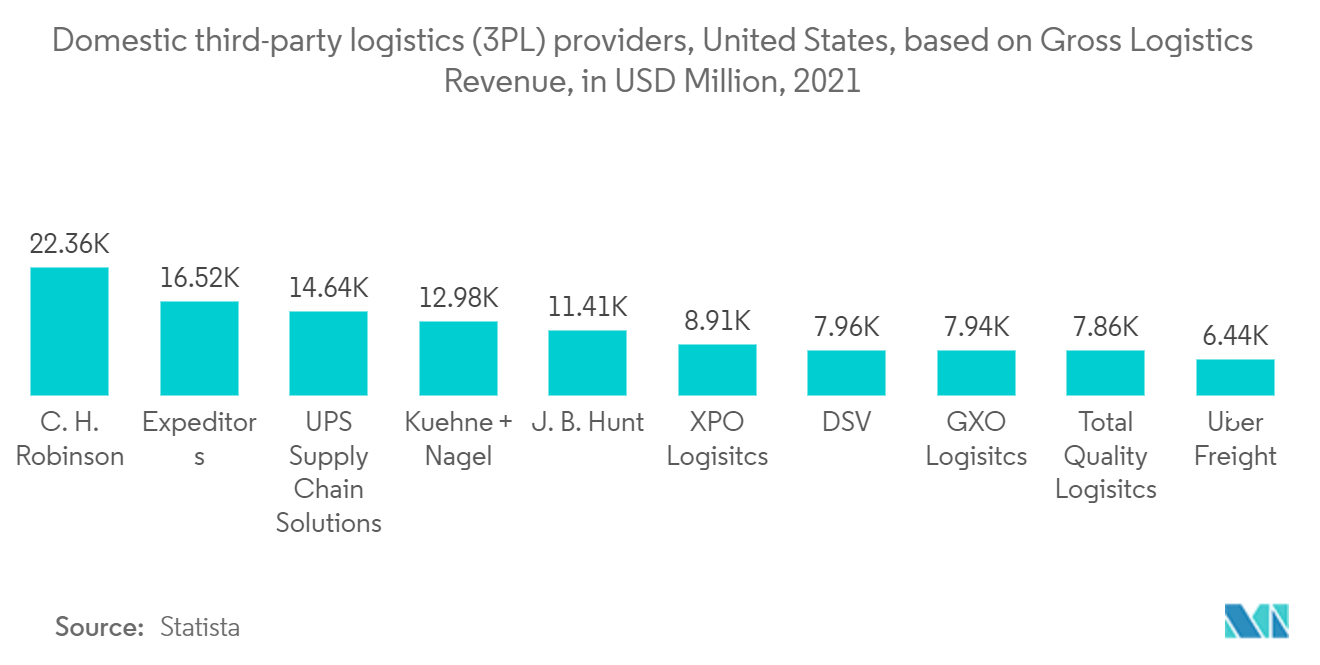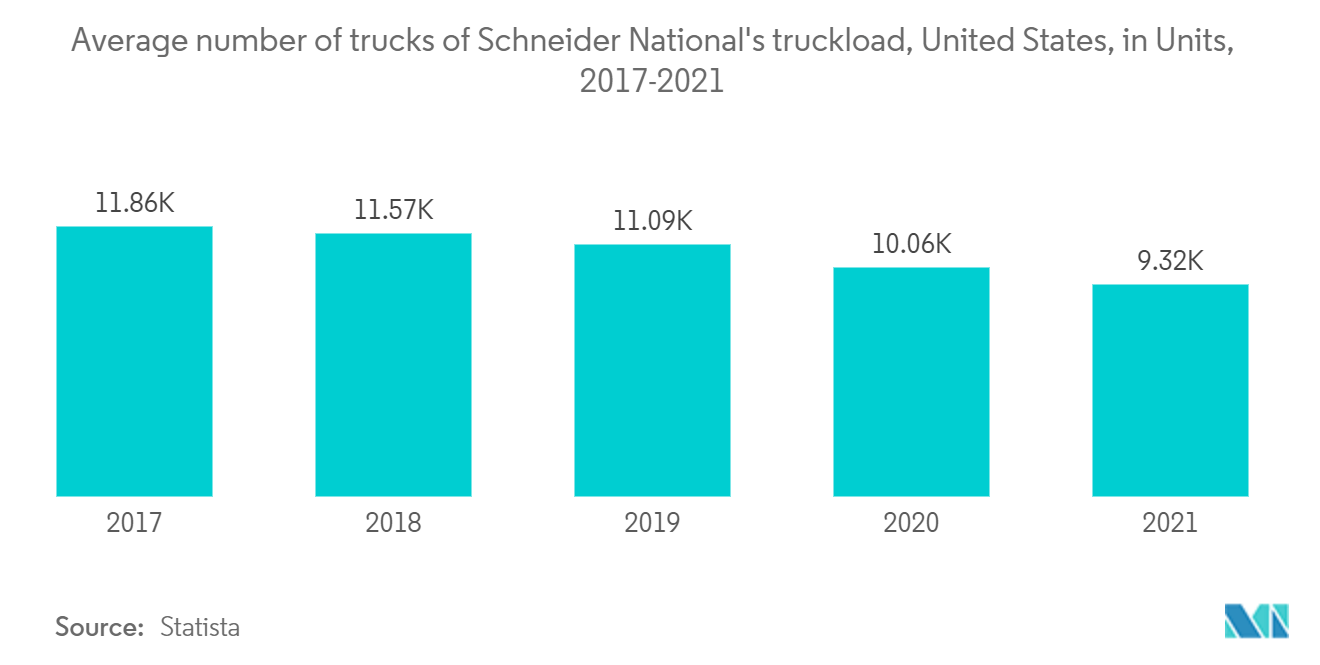Market Trends of Texas Freight and Logistics Industry
This section covers the major market trends shaping the Texas Freight & Logistics Market according to our research experts:
Increase in value-added services in the country driving the market
- Most sales channels continue to include in-person operations, but retailers must adapt their sales strategies as consumers increasingly migrate to the digital sphere. Specifically, they are expanding their online shopping platform and capitalizing on the new trend of selling on social networks, known as social commerce. The combination of sales capabilities in both virtual and physical spaces and other alternative sales channels elevates omnichannel sales to a new level. However, when expanding sales channels, vendors must also consider whether their current logistics and supply processes are appropriate for their new sales channels and make necessary adjustments. As a result, warehouse, distribution centre, and fulfilment logistics management must be modified to accommodate multi-channel and omnichannel logistics procedures, which present more complex challenges when compared to linear picking in single-channel conventional sales.
- Strong consumer demand, ongoing supply chain bottlenecks, and limited carrier capacity drove air, ground, and ocean transportation rates to historic highs in 2021, as shippers relied on third-party logistics providers to replenish inventories and avoid product stockouts. Even though many 3PLs have yet to provide us with financial results for 2021, Armstrong & Associates' current estimates show that the US 3PL market gross revenues increased by a whopping 50.3%, bringing the total US 3PL market to USD 347.9 billion. To meet demand, ITM and DTM 3PLs increasingly used the spot market to find carriers to cover shipments. While strong demand drove growth across the 3PL market, the true leaders were 3PLs with strong carrier management skills who had technologically innovated, allowing them to tap long-standing carrier relationships to cover shipper demand versus being overreliant on using load boards or traditional means to buy capacity at spot market rates.
- As more 3PLs build API (application programme interface) integrations into large shippers' transportation management systems (TMS) for truckload spot-market rate quoting and automated load tendering and booking, the ongoing digitalization of transactional truckload DTM/freight brokerage continues at a rapid pace. Several dozen 3PLs are utilizing these TMS interfaces to provide shippers with instant spot rate quotes and the ability to complete load tendering and booking via the system APIs. This process automates traditional spot market freight brokerage sales functions and encourages shippers to use spot pricing more frequently rather than contract pricing. Spot market truckload sales are being automated alongside carrier sales (procurement) functions within freight brokers, who are using intelligent capacity management systems to digitally match shippers' loads to carriers based upon historical and real-time carrier capacity data analyzed via machine learning/artificial intelligence algorithms.

Increase in cross-border road freight propelling the market growth
- The economic importance of trucking cannot be overstated, given that an estimated 80% of American communities rely solely on trucking for freight services. Trucking is especially important in sprawling Texas, which is both the largest of the 48 contiguous states geographically and the site of a major economic boom. The Dallas/Fort Worth area is expected to add 294,700 jobs in the year ending May 2022, which is nearly three times the average annual gain before the Covid-19 pandemic. Meanwhile, the trucking industry is evolving. Once thought to be almost entirely a male occupation, it now employs a record and a growing number of women.
- The year ended on a high note, with USD 60.6 billion in freight crossing between Canada and the United States in December 2021, a 27.4% increase over the same month in 2020 and a 21.9% increase over December 2019. Trucks transported USD 30.8 billion in freight across the Canada-US border in December 2021, accounting for 50.9% of the total freight value crossing the northern border. Crossings in Windsor, Ontario, accounted for USD 9.2 billion in trans-border truck freight, while Sarnia, Ontario, handled another USD 5.5 billion. Only the U.S.-Mexico port at Laredo, Texas, saw more truck freight than those two Canada-U.S. ports combined, with USD 16.8 billion in truck freight.
- The amount of training and education required to enter the profession is increasing, and the pay scale is rising significantly. It is one of the better-paying fields available to non-college graduates, and it is a field open to all, with equal pay for equal work. There is no pay disparity in trucking. According to the American Trucking Association, the United States is 80,000 truckers short of where it needs to be, and one trucking industry expert believes it has a lot to do with an ageing workforce. In the United States, the average trucker is over the age of 50. As more people prepare to retire, the shrinking population of drivers is expected to drive up inflation even further.


